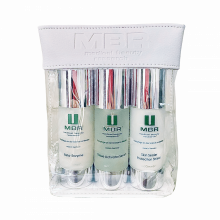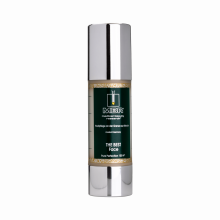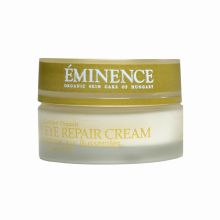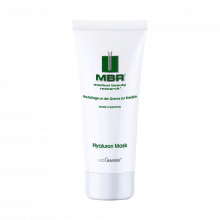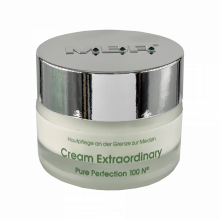Acne Treatment
How is Acne Treated?
Unfortunately, there is no cure for acne, but there are ways to keep acne under control so that episodes are lessened in frequency and severity. Because there are so many different reasons for acne to develop, the treatments aim to control one or more of the factors that cause it in the first place. Because there are so many reasons for acne, no one medicine or treatment works well for everyone. Since there is no single treatment for acne, many people will find that a combination of treatments is required to treat their symptoms effectively.
There are over-the-counter (OTC) and prescription treatments for the treatment of acne symptoms. Prescription treatments will often require follow-up by the prescribing doctor to monitor progress. If one treatment does not work, the doctor will often try another treatment. Therefore, it may take trying several different methods before the best one is found that corresponds to the particular symptoms.
OTC treatments do not have to meet the same regulations and scientific testing that prescription procedures go through before approval for use. When looking for an OTC acne treatment, one thing to check out is whether or not it has active ingredients that have been proven to treat the particular symptoms that need to be taken care of. In general, it is best to consult a dermatologist before undertaking any type of acne therapy.
Exfoliation, the removal of hard, dead outer skin cells, is not an effective acne treatment by itself, but it is often used alongside other methods. By removing the outer layer of dead skin cells, any medicine or other topical treatment has a better chance to absorb directly into the skin. In addition, by cleaning the dead skin cells off of the skin's surface, it is thought that this may help the dead cells inside the pores be cleared out also. There are many types of exfoliating agents used in the therapy of acne. The most commonly used are alpha-hydroxy acids, also known as AHA, and beta-hydroxy acids, known as BHA. In clinical trials, BHA seems to offer more relief from acne symptoms because it also helps cut down on sebum production.
Products containing AHAs or BHAs
Topical antibacterials are used on the skin to try to stop or slow bacterial growth in the pores. There are several different types of antibacterial agents, and the most commonly used is benzoyl peroxide. This strong oxidizer works to kill bacteria by generating oxygen-free radicals. The good thing about using benzoyl peroxide is that bacteria cannot develop a resistance to oxygen, so if it helps the symptoms of acne, it will continue to work for as long as it is used. However, free radicals can damage the skin by causing dryness and cell damage that can accelerate the skin's aging process. Many people find this to be the most effective form of treatment, so the best thing to do if you are going to use benzoyl peroxide is to use the lowest concentration that works for the symptoms. Benzoyl peroxide is often used in conjunction with other acne treatments. Other topical antibacterial agents are used for treating acne, including triclosan, chlorhexidine gluconate, and tea tree oil. However, these are not as effective as benzoyl peroxide in treating acne.
Topical antibiotics are used to target bacteria that can cause acne directly. Because topical antibiotics are used directly to kill the bacteria, they also cause less damage to healthy skin than topical antibacterials. Topical antibiotics can be about effective as oral antibiotics. There is a downside, however, to using topical antibiotics. Over time and repeated use, bacteria can develop a resistance to antibiotics and other drugs, thus making it harder to treat the symptoms with antibiotics. The most commonly used topical antibiotics for treating acne are erythromycin, clindamycin, and tetracycline.
Products with natural antibacterial ingredients
There are several types of oral antibiotics used to treat acne. The most commonly used are tetracycline, oxytetracycline, doxycycline, and minocycline. While oral antibiotics have the same rate of success in treating the symptoms of acne, there are side effects. Possible side effects from oral antibiotics used for treating acne and its symptoms include diarrhea, colitis, and dysbacteriosis. Despite the possible side effects, oral antibiotics are useful in treating acne when the disease is spread over a large area of the body, making the use of topical antibiotics impractical. In addition, deep cystic acne often does not respond to treatment with topical antibiotics, but it will often respond to oral antibiotics. The downside of oral antibiotics, like topical antibiotics, is that the bacteria may develop resistance to the drugs over time.
Hormonal treatment is sometimes used to treat acne, but there are many side effects, and this type of therapy must be undertaken with strict medical supervision. Androgens play a major role in the development of acne, and reducing their levels can help alleviate acne and its symptoms. However, this type of treatment is not generally used in men because of the side effects, including an impact on the sex drive. However, it has been shown that women using estrogen and progestin contraceptives have lowered the symptoms of acne. Antiandrogens used together with estrogen are more effective in studies. The drawback to this is that even women can have many side effects from the treatment, including a lowered sex drive. Some improvement in symptoms of acne has been seen with the use of a topical antiandrogen, but the effects are minimal.
Products conaining phytoestrogens
Topical retinoids are used to reduce sebum production and change the epithelial skin cells. The retinoids are actually active metabolites made up of vitamin A and its analogs. The most commonly used retinoids are tretinoin or Retin-A, adapalene or Differin, and tazarotene or Tazorac. One of the drawbacks to using topical retinoids is that there is usually an increase in acne symptoms during the first few weeks of usage. Topical retinoids are also known to cause dryness and flaking of the skin, as well as skin irritation. Because topical retinoids can be sensitive to UV rays, it is important always to use an effective sunscreen in conjunction with this treatment.
One of the most effective acne treatments is oral retinoids like isotretinoin, also known as Accutane. These work by reducing the amount of sebum and altering the epithelial skin cells. It is also thought that oral retinoids can also help with some of the other causes of acne. In studies, isotretinoin has been proven to be 80% effective in clearing up severe acne and its symptoms. The treatment usually takes about 4-6 months, but, like the topical retinoids, it often causes more acne outbreaks at the treatment's start. The good news is that isotretinoin therapy can often cause acne to go into remission. Patients who experience outbreaks later on, have found that the outbreaks are much milder.
Skin Care Product's With Retinols
Even though they are very effective, oral retinoids are not used often and are considered a treatment plan that is only used in cases of acne that do not respond to other treatments. There are many side effects possible with oral retinoids, including dry skin, nosebleeds, liver damage, and heightened blood triglycerides. In addition, oral retinoids are also linked to depression and psychosis. Because of the many risks involved, oral retinoids are not to be used by pregnant women or who may become pregnant.
The use of a visible, intense light to treat acne is known as phototherapy. The light reacts with the chemical called porphyrins reacts with the bacteria that causes acne. The reaction between the light and the porphyrins creates free radicals that are deadly to the acne-causing bacteria. There is little in the way of side effects of this therapy because it is just the bacteria that is affected. Blue light has been found to offer good results on its own, but a combination of red and blue has proven to be even more effective in treating acne. The best results have been obtained from at least two light treatments per week for one to three months at a time. After the initial treatment is finished, the resulting improvement in the acne will last longer than with antibiotics or benzoyl peroxide. This form of treatment does require office visits for treatment or the purchase of expensive equipment required to do the therapy at home.
In addition to phototherapy, photodynamic therapy combines blue light treatment with a photosensitizing agent (delta-aminolevulinic acid (ALA) to help increase the body’s production of porphyrins. This treatment is still being developed and requires more research and trials. However, there is hope that it will offer another possible effective treatment for acne.
Many other acne treatments are used to a lesser degree. Some seem to offer temporary relief from acne, and others look promising for longer-term treatment. Research is being conducted to find out more about these possible treatments and how they work.
Azelaic acid works to fight acne by reducing the production of sebum. Also known as Azelex, Finevin, and Skinoren, topical azelaic acid is thought to block the effects of androgens and thwarting the formation of comedones. This may help in mild cases of acne.
Topical tea tree oil is often used as an antibacterial and anti-inflammatory. Small medical trials have been conducted on tea tree oil, and it has been proven to be about as effective as topical antibiotics in treating acne.
Medical trials have shown that topical niacinamide gel was as effective, and possibly more so, as topical antibiotics. A form of vitamin B3, niacinamide is an anti-inflammatory.
Topical retinaldehyde is a form of vitamin A that is converted to retinoic acid when applied to the skin. It has antibacterial properties and works against acne-causing bacteria. More studies are underway to find out the best ways to use this potential acne treatment.
Heat therapy has been used directly on areas where lesions are just beginning to form. The outcome seems to prove that heat applied directly to the lesion will make the outbreak milder and shorter than without treatment. Unfortunately, this method does not seem to work on cystic acne.
Oral vitamin B5, or pantothenic acid, taken in large doses, has been claimed to improve the symptoms of acne. However, this has not been proved, and more tests are required before being used widely.

